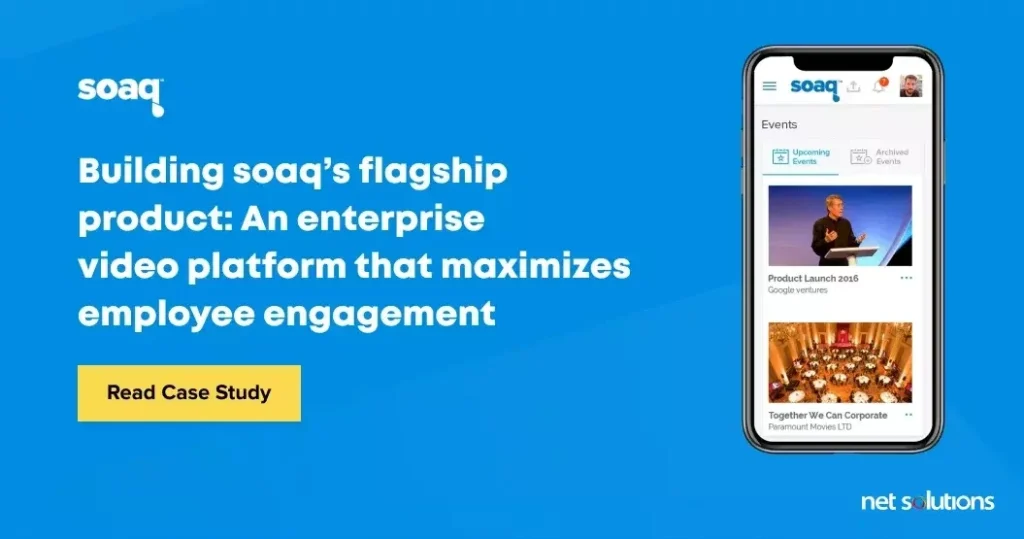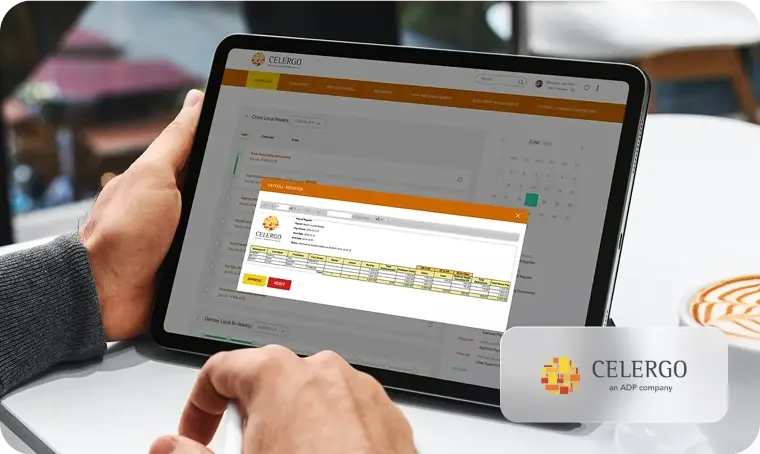Entrepreneurship is all about solving problems.
If you can think of a problem that needs to be solved and its solution, you can build a successful tech startup. An entrepreneur finds a problem, and instead of getting frustrated like others, they try to solve it.
But then, why do nine out of ten startups fail? Well, there can be many reasons behind these failures, and luckily, founders not having the tech background are none of them:
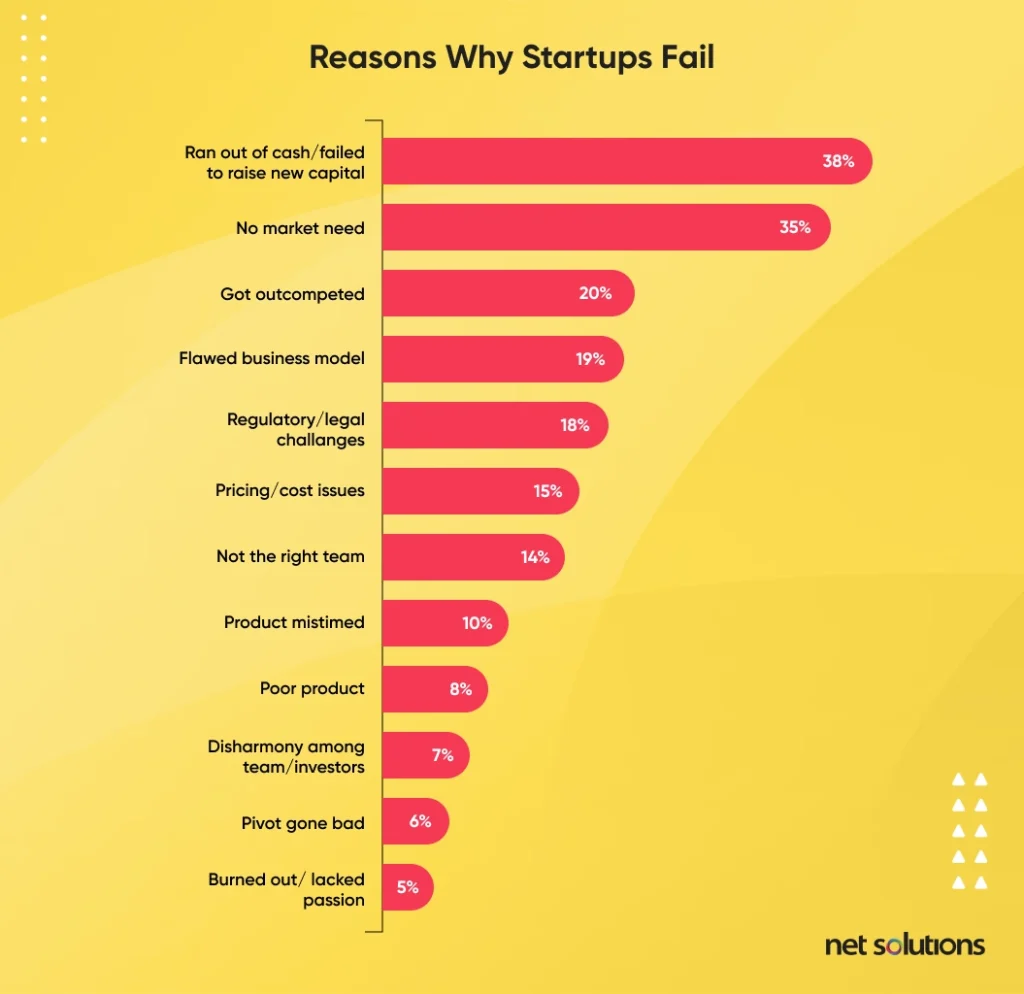
Most businesses fail because they need to build the right product that the market needs. Some die because they run out of money, and others do not have the right team.
Therefore, by having a solid game plan and knowing what mistakes to avoid, you can launch a tech startup successfully backed by a team of diverse industry experts. Whenever you feel unprepared or dicey in the initial phase of your tech startup, having a CTO or a technical co-founder is always the first line of defense. In fact, with the pace at which technology is evolving, modern businesses gain a competitive edge with the involvement and consistent guidance of a CTO.
How Can the CTO Benefit a Startup?
Every newbie understands how hard it is to create a tech startup in the competitive landscape, as resisting stiff market competition isn’t a cakewalk.
In today’s digital world, every startup business- whether technical or non-technical- leverages technology in one form to grab the attention of its potential customers. To tackle this, you need a CTO who offers his perspectives on creating a business plan for a tech startup.
And for non-technical co-founders and young entrepreneurs, counting on a CTO can help create the entire technical picture of the project. This helps in clearing all your queries about creating a tech startup and minimizes all the possible risks of a launch startup failure.
How to run a tech startup that turns out to be a success, in the long run, is solely based on the skills of the CTO. Having the suitable skill set and channeling the skills in the right direction throughout the launch startup decides your tech startup’s overall success.
Not only this, a CTO can assist you, a tech startup, in countless segments of your business cycle with a broad skill set, including –
A user-centric mindset
When starting a tech startup, it is the prime job of the CTO to get a clear idea of who the final user is because most people end up developing something that fails to meet the needs of the end customers. So, CTOs need to be clear about their end-users, outline whom they are designing for, and make strategic planning accordingly. The faster you understand your audience’s pain point and figure out solutions to solve it, the faster you’ll be able to create a user-centric approach.
Prior experience
Tech startups are fast-paced, disruptive, and demand working with limited costs, resources, and skills. Adjusting to this is always a daunting task for newbies.
A CTO’s prior experience in tech startups will help you navigate the startup world more precisely and foresee the potential challenges on the way. From ensuring secure funding for the business to leveraging the network to expand the business, there are countless benefits accompanied by experience.
Negotiation Tactics
Besides holding technical expertise, CTOs regularly communicate with the company executives, stakeholders, the HR department, and other connected individuals. Unlike the more prominent organizations, in startups CTOs are more inclined towards these parties and have to negotiate with them regularly and effectively for seamless yet productive project development.
Technical & problem-solving skills
The CTO of a tech startup is expected to have a stronghold on his technical and problem-solving skills. Whenever any party or team in the organization is stuck, the CTO will step in. CTOs must have excellent problem-solving skills for the expected and unexpected problems evolving throughout the business lifecycle.
Other skills of a CTO include:
- Software architecture
- Leadership
- IT management,
- Product development
- Time management,
- Strategic thinking,
- Setting & executing their vision,
- Project management,
- Security & privacy management.
As per a Gartner report, the CTO manages the physical and personnel technology infrastructure, including technology deployment, network and system management, integration testing, and developing technical operations personnel.
While the CTO and a technical co-founder will portray the technical picture and bring those ideas to life, the non-technical founder acts as a conceptual visionary while handling marketing perfectly. So, if your tech startup doesn’t have a technical co-founder or a CTO, you still have ample tactics to understand how to launch a tech startup and succeed.
Having built many successful tech startups at Net Solutions, like Front Rush, Soaq, and Sampleboard, we created this guide to help non-technical founders create a tech startup easily and successfully.
You can use it as a blueprint for starting your tech venture.
How to Build a Tech Startup Without a CTO?
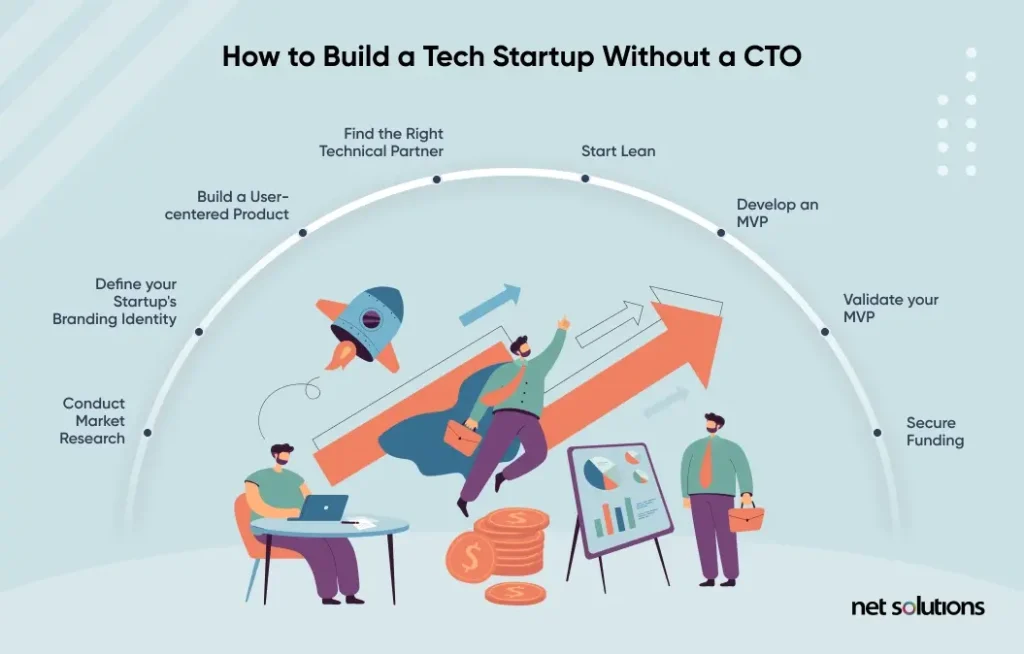
Many people think that starting a tech business is only about coding. But it’s not. Launching a tech business involves planning, managing legal activities, recruiting people, making critical financial decisions, and many more. Here’s how you should start:
1. Conduct market research.
Whether you are a technical person or not, customers must come first for an entrepreneur. So, before you fall in love with your tech startup ideas, ensure your target audience loves them too.
The process of finding the scope of your idea is called discovery. Before building any tech startup or product, you must know the following:
- What problem are your users facing?
- How is your product or service going to solve that problem?
- Is the problem real? Or are you trying to solve a problem that doesn’t exist?
- Why will users buy your product or services?
Before you invest in your product or tech business development, you must answer these questions to understand your user’s needs. Moreover, you will collect evidence on why your product or tech startup will be a hit while conducting discovery.
This evidence will give you confidence in your product and help you raise substantial funding later. Remember, because you are non-technical, you are the right person to go and collect these customers’ insights yourself.
If you were a technical guy/girl, you might have confused your potential users with technical jargon they couldn’t understand. Though discovery is a never-ending process requiring many resources when building a specialized product or business, you can conduct it yourself when starting.
Here is a complete guide to conducting product discovery to ensure you build or improvise a needed product that solves a problem.
2. Define your startup’s brand identity.
What is there in a name?
The answer is your brand’s first impression which can significantly impact your success. The wrong names can do worse than failing to connect with your consumers resulting in many hurdles.
On the other hand, a clear, short, and powerful name can help your branding and marketing efforts. Therefore, your business name should be:
a. Easy to spell and remember:
Leaving all the confusion behind is crucial when deciding your business name. You don’t want people confused when finding your business or misspelling it when talking to friends. So, keep it simple and relatable. For example, Airbnb is short, clear, and reflects what the brand offers(Air, Bed, and Breakfast).
b. Doesn’t set the limits:
When building a business, every entrepreneur’s goal is to scale it, and if your business name restricts that scaling – it isn’t a good one. For example, suppose Jeff Bezos selected a name like “Online Books” for Amazon. Don’t limit your business to a particular city or product.
c. Short and concise:
Purchasing a domain name is next because you are building a tech business. And shorter is better when it comes to the length of domain names. A short term is easy to pronounce, remember and spell.
Moreover, the ideal and most common domain names’ length is 10-12 characters. Our own brand name Net Solutions, is exactly 12 characters long.
Here’s why a domain name is so important:
a. It creates brand recognition:
Your domain name is your branding opportunity. People recognizing your brand is what makes a startup successful. So, select a domain name that increases your brand recognition and drives people towards it.
b. It affects SEO and ASO:
It doesn’t matter if you are into web or mobile app development. Your domain name will be your brand’s name, affecting its visibility. Here is an ultimate guide to improving your mobile app’s visibility with the proper ASO techniques.
c. It is your brand’s first impression:
When visitors see your site in SERPs, your domain name should attract them to drive a click. A good domain name can leave a long-lasting impression on your website visitors.
This is why having the right brand and domain name is so important. Before you plan to start a successful tech startup, select the right brand and domain name. Some online tools that can help you generate a good business name include the Business name generator by Shopify and Namelix.
3. Build a user-centric product.
One of the most critical aspects of building a successful tech startup is to create a product centered around your target users’ needs and preferences. By focusing on the user experience, you can create a product that people will love and want to use, leading to increased engagement and revenue.
A user-centered approach is critical for developing a product that meets the needs and preferences of your target audience. By conducting user research and testing, you can gain valuable insights into what users want and need, which can inform the development of your product features and design. This can also help you identify potential issues and areas for improvement early on, saving time and resources in the long run.
While a CTO can bring technical expertise to the development process, there are still ways to build a user-centered product without one. One approach uses low-code or no-code platforms, allowing non-technical founders to build software applications with minimal coding skills. These platforms often come with pre-built templates and components, making it easier to create a user-friendly interface.
Another approach is hiring a freelance developer or agency with experience building user-centered products. They can provide technical expertise and help you build a user-friendly and technically sound product.
Many tools and resources are available to help you build a user-centered product. Here are a few examples:
- User research and testing tools: UserTesting, Validately, Optimal Workshop
- Design tools: Figma, Sketch, Canva
- Low code/no code platforms: Bubble, Webflow, Glide
- Freelance developer platforms: Upwork, Freelancer, Toptal
4. Find the right technical partner.
Finding the right technical partner is critical for building a successful tech startup. A technical partner can provide the expertise and resources needed to develop and maintain your product, help you navigate technical challenges, and stay ahead of the competition.
Choosing the right technology partner can make all the difference in the success of your startup. An excellent technical partner will bring technical expertise, share your vision and values, and be committed to helping you achieve your goals. They can also provide valuable guidance and support in navigating the complex world of technology and startup development.
Finding the right technology partner can be challenging, but there are a few key steps you can take to make the process easier. One approach is to attend networking events and conferences, where you can meet potential partners and learn more about their experience and expertise. You can also search for technical partners online, using platforms like LinkedIn or Clutch to find and compare different companies and individuals.
Another approach is to ask for recommendations from trusted sources, such as mentors, industry experts, or other startup founders. They can recommend a technical partner they have worked with and had a positive experience with.
Once you have identified potential technical partners, evaluating them carefully is essential to ensure they are a good fit for your startup. Here are a few tips:
- Look for experience and expertise: Choose a partner with experience and expertise in your technologies and platforms and a track record of delivering high-quality products.
- Assess communication and collaboration skills: An excellent technical partner should be able to communicate clearly and work collaboratively with your team and provide regular updates and feedback throughout the development process.
- Consider cultural fit: Look for a partner whose values and culture align with your own, as this can help ensure a successful and productive partnership.
- Evaluate pricing and flexibility: Consider factors such as pricing, payment terms, and flexibility in working arrangements to ensure you choose a partner that is both affordable and meets your needs.
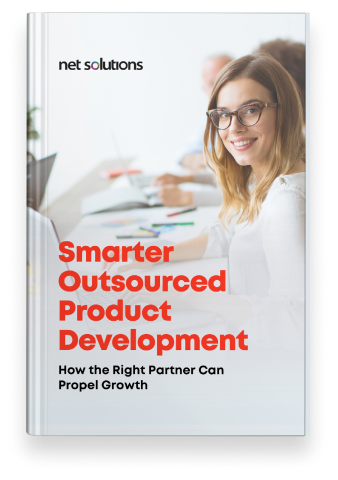
We respect your privacy. Your information is safe.
5. Start lean
If you go by the decade-old formula to make a tech startup successful, you would write a full-fledged business plan and a pitch deck for investors, recruit a team of developers, build a feature-rich product, launch it, and start advertising it as hard as you can. If you go this way today, the odds are more that you will face a fatal setback.
Are you asking why?
To be a Tech Entrepreneur with fewer risks, you need to understand the lean startup methodology. It favors experiments over planning, iterative designs over complex development, and user feedback over intuitions. Plus, it costs less, and you don’t have to spend all your budget simultaneously.
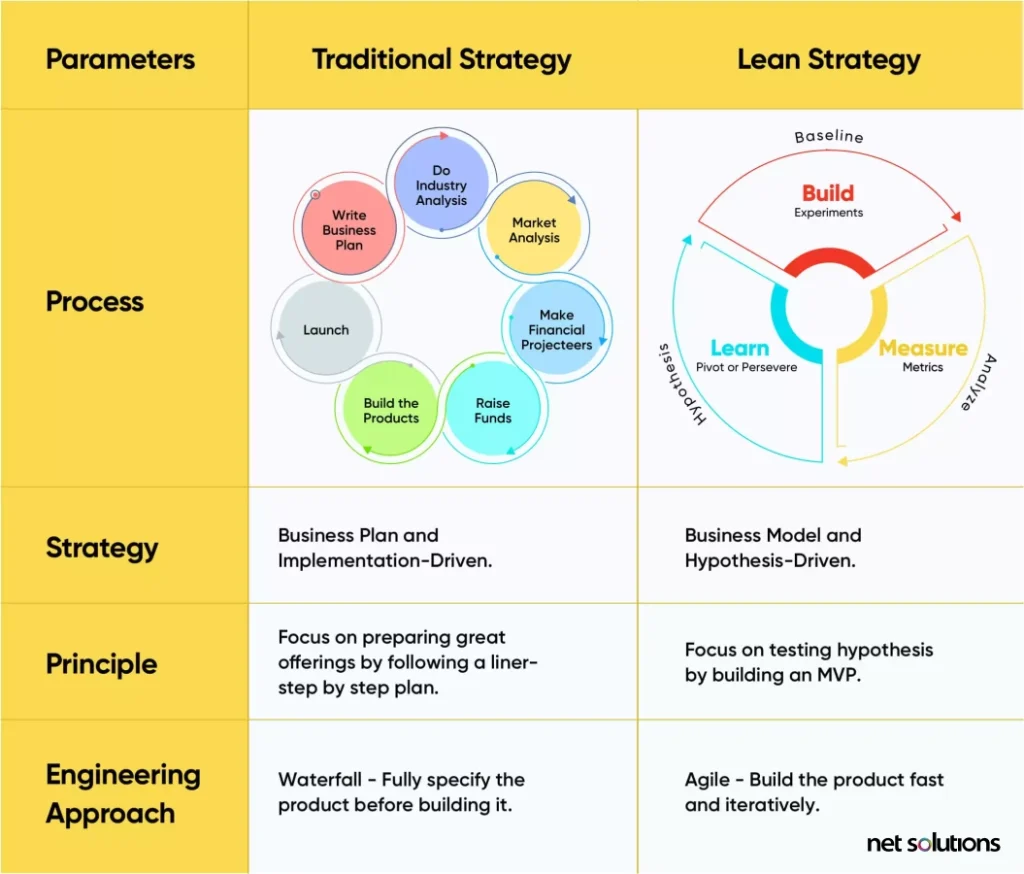
In the modern ecosystem, startups grown iteratively based on user feedback perform best and yield better results than those built using the traditional approach.
If you are a non-techie or don’t understand everything, lean — just focus on building your core product instead of trying to build a multi-billion dollar product with high-end features. You can consider launching your startup the lean way to keep costs down and avoid other expenses before you even have some revenue sources.
You can if you are willing to learn coding as a side hustle. If you don’t want to, it is also good enough. As a non-tech founder, you can consider finding a CTO for your startup and go ahead with the help of a reliable outsourcing partner.
Here is how to start a tech startup without a tech background using the lean approach:
a. Sketch Your Hypotheses
Putting everything you know about your startup on paper is sketching hypotheses in the lead methodology. Instead of creating a full-fledged business plan that answers where your startup will be after five years from now, non-tech founders can summarise their guesses or research data in a framework called the business model canvas. It represents how your startup is creating value for all its stakeholders.
The BMC (Business model canvas) lets you look at the nine building blocks of your startup on a single page:
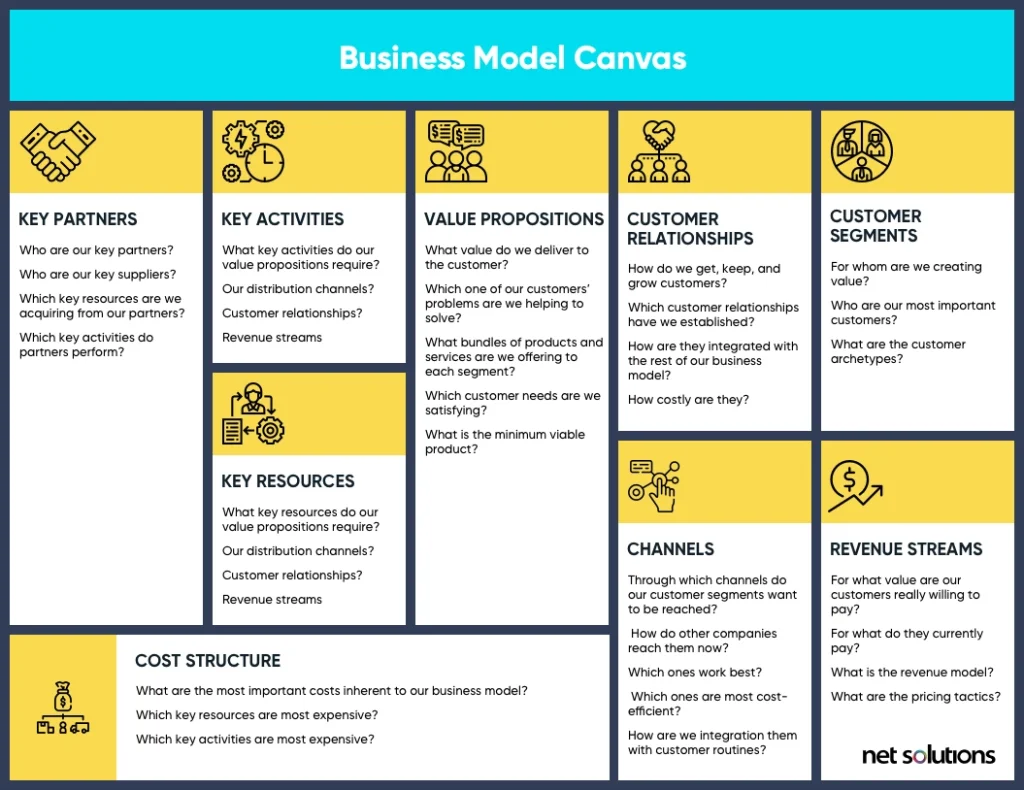
b. Test the Hypotheses
Lean startups use the “Get out of the building” approach to talk to their customers and gather insights on whether their guess is correct. Here, non-tech entrepreneurs can easily talk to potential users, partners, or other stakeholders to discuss the startup offerings they are providing, pricing, channels, and more to test their guesses.
However, don’t make the mistake of confusing the testing hypothesis step with collecting customers’ insights. In the initial stage, you were just testing your customer’s problems, whereas you will be testing if your solution is development-worthy or needs further refinement in this stage. Using the customer’s input, startup owners should revise their assumptions, retest revised offerings, and build the right product for their users with the MVP approach.
6. Develop an MVP
Now that you know your business basics and have at least a vision of your product’s appearance, building a Minimum Viable Product is time to get the show on the road. An MVP is a form of your product that lets you collect the maximum amount of validated insights about users with the least effort. By building an MVP, you test the product-market fit and save time and money.
We said the least effort because you will focus on developing only your product’s core features while building an MVP. Everything else shall be kept for later stages. An MVP gives you validated insights because you can launch it for your users to get their feedback immediately.
If your users react to your MVP and find it helpful, their delight will inspire you to build a stellar product. Even if things go the other way around, the feedback will help you improve your offerings.
Here is the right approach to building an MVP:
As a non-technical founder, you will face challenges and hurdles while building an MVP. However, it shouldn’t restrict you from taking action. You don’t need to know everything about technology to build and launch an MVP. You can consider hiring an outsourcing company or freelancer to do the needful. All you need is –
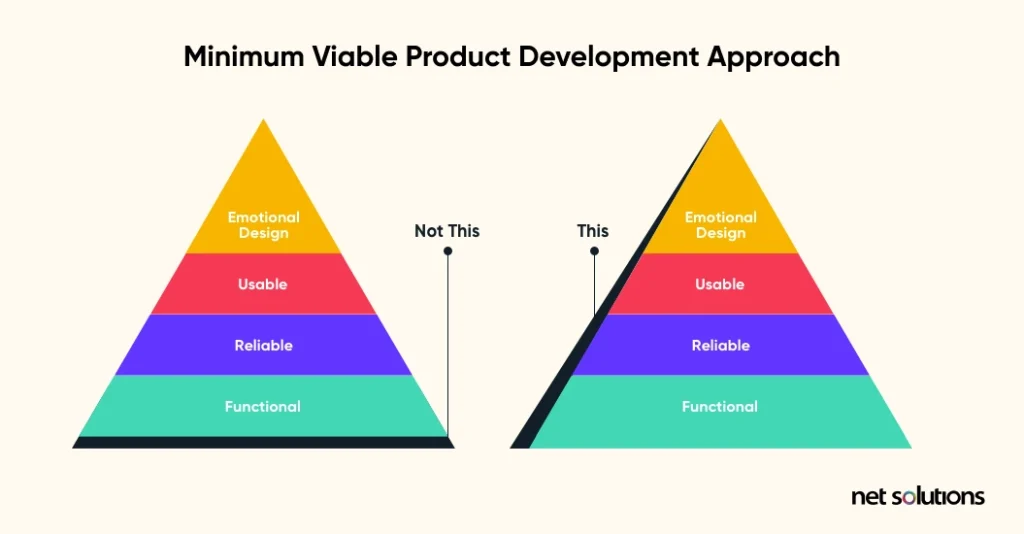
a. A Clear product vision.
To get an MVP developed, you need to communicate with the tech people who take immense pride in their tech knowledge. However, that shouldn’t bother you. You only need to research popular app development trends and technologies. It is excellent if you know little about tech jargon and programming languages; you just need a clear product vision.
You can win this situation by clearly communicating your product vision and knowing your market’s nitty-gritty.
b. The right technology partner
Your technical gaps will undoubtedly come forward when you hire developers to build your MVP. However, this is again a small factor.
The number of people with the tech knowledge or skills to code a solution is much more than those of entrepreneurial minds. The fact places you within people with a rare skill set.
The best way to tackle this situation is to find someone you know who can help you hire the right team or tech partner. They can be friends, colleagues, relatives, or friend-of-friends.
If you don’t invest in advice now, you may end up with a product built cheaply but not scalable, hard to update, and impossible to maintain. The potential risks of hiring the wrong product development partners are much more than you realize. And as a budding non-tech founder, you shouldn’t take these risks.
Together with your technical advisors, you can find a long list of tech partners, shortlist the ones you like, interview them, check their portfolio, talk to their former clients, and then consider hiring after double-checking everything.
The idea behind starting with an MVP is to start fast. Your MVP doesn’t need a large user base. You are building it for one niche. Make sure it is robust enough to catch your user’s attention.
7. Validate your MVP
Since you will be targeting a constrained market using your MVP, performing an elaborate test to validate it will be a waste of time. However, developing an MVP isn’t enough; validating it is also crucial.
Here are some strategies to validate your minimum viable product:
If your users show interest in it, it is a win-win. So, calculate the number of user registration requests your MVP receives. The more the new registration you have, the more validated your MVP becomes.
Online surveys are also suitable for knowing how your customers feel about the product. Did they like its user experience? Does it solve their problems? What value is your MVP adding to their lives? These are some questions that will help you understand the scope of your MVP.
Building and validating an MVP is essential to make a product your target audience would love. Here are eight more ways to validate your Minimum Viable Product. Once you are done collecting the user insights on your MVP, refine it as per the feedback, re-launch your product, and keep iterating to satisfy your users’ needs.
8. Secure funding
The sector with the highest average funding amount was Information Technology (IT) ($131,743), followed by Wholesale Trade ($107,576), Agriculture, Forestry, Fishing & Hunting ($94,333), Manufacturing ($83,700) and Administrative Support, Waste Management & Remediation Services ($67,801).
Money is the bloodline of any startup. To take your tech startup off the ground, you will require money. A lot of money! Nobody will come to you to invest in a new business idea just because you have one.
If we believe statistics, 29% of startups fail because they run out of money. Turning an idea into a revenue-generating business needs a fuel called funding — when you need this fuel depends mainly on your startup type.
But when you feel the need, here are some ways to fund your startup:
a. Friends & family
If you are in the early stages of your startup, asking for help from friends and family is not a good idea. While it may be hard to convince investors to fund your startup, people who are close to you and believe in your dreams can help you. However, if you take this money as a loan, get legal advice and make a complete return plan.
b. Angel investors
Angel investors are people with a massive amount of capital. Thus, they can invest a significant amount of money in a startup they think is disruptive. They usually invest in return for some equity in the startup. Unlike VCs, angel investors don’t usually demand quick returns and comprehend that growing a startup into a profitable business can take quite a while.
Angel investors benefit from new companies that need funds in the startup growth phases. If you are yet to validate your startup product development idea and need extensive market research that would require money, the funding raised with angel investors’ help can help you create a strong base for your company.
The websites where you can find angel investors for your startup include AngelList, SeedInvest, Tech Coast Angels, and more.
c. Seed funding firms,
Also known as incubators, they help startups grow to their full potential by providing the necessary funds. These firms fund startups using a standardized process. Sometimes, you may work in their office and use their staff. The two most popular seed funding firms are TechStars and Y Combinator.
d. Venture capitalists
VC funds are overseen by experts with a sharp eye for discovering startups with incredible potential. Once there is an acquisition or IPO of the business they have invested in, they take their profits and seek other investments. The advantage of finding a VC for your startup is that they will keep an eye on your startup’s growth to ensure they will get the profits.
On the other hand, their expertise will help you run a tech startup effectively. However, VCs would stay loyal to your startup until they recover their profits, usually between three and four years.
Once you decide you need funds for your startup, proceed carefully while selecting your funding source, as giving significant equity in return for funds can cause you a loss in the long run.
When you find potential investors, pitch your idea confidently and effectively. It doesn’t matter here whether you are a technical or non-technical person. You just need to have your business model at your fingertips and show investors how it benefits them. Once you get the funding, you can build the startup of your dreams.
How to start a tech startup without a CTO? The question haunts many, but it is not rocket science. To build a tech startup, you only need the right approach, not lines and lines of code.
Only some men’s jobs are coming up with an incredible ideas, fighting against the odds, visualizing a solution, and building a product that makes an impact. However, entrepreneurial minds like you, with a clear vision and passion for attaining the goal, can do so.
If you are willing enough to start a disruptive tech startup, there needs to be more technical knowledge, time, and money. Proper planning and execution will help you overcome these problems and launch a successful tech startup.
Frequently Asked Questions
A CTO will help you expand your knowledge of the core technical aspects of your business. If you’re unfamiliar with the industry’s technical side, a CTO can be your go-to person, and if not a CTO, you must hire someone with some technical knowledge based on your industry.
Yes.
Solo founders do raise funds and attract investors. If you look at the data from Crunchbase, single-founder startups are the most common when it comes to raising greater the $10 million.
Finding the right technical partner won’t be easy. You’d need a lot of research and the eye to find the right fit for your business.
You can always start with the basics – LinkedIn, Upwork, and other platforms. You can also attend startup events, tech&industry events, or run your event. You can also refer to platforms like Founder2be, CoFoundersLab, AngelList, CrowdForge, and more.
A CTO can ease the entire process for you. Here are a few drawbacks that your business can face in the absence of a qualified CTO –
- Not being able to choose the right tech stack for your business needs
- Hiring the wrong developers for your startup
- Problems with curating a long-term vision and technical strategies for your startup
- Not having a technical person representing your startup


